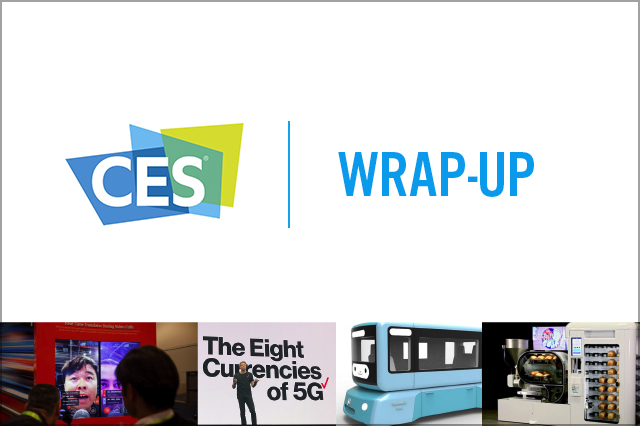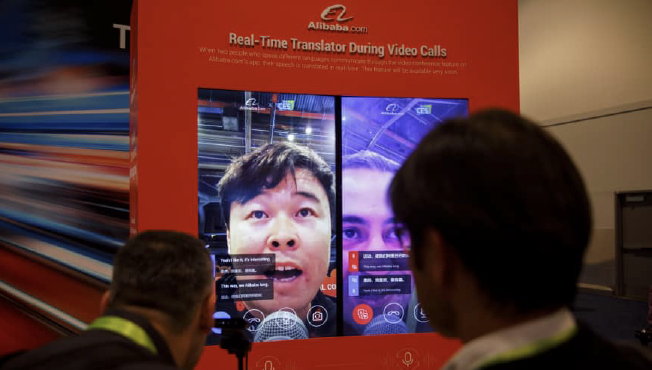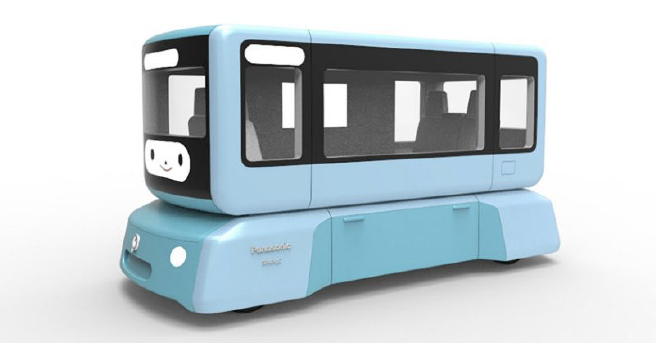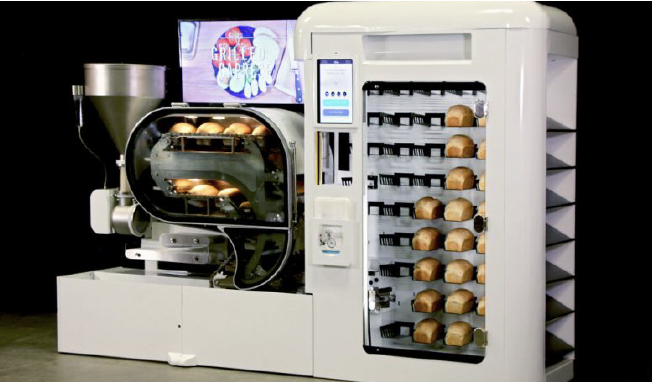
albert Chan
1. AI-based voice control is expanding beyond dedicated appliances to encompass the smartphone, home and automobile.
At the show, we saw various applications of AI voice technology, which has expanded beyond AI appliances such as the Amazon Echo, Samsung’s Bixby, Apple’s HomePod, the Google Home and many others. Voice control has moved into the realm of home appliances, such as Amazon’s voice-controlled microwave oven, and the voice-controlled TVs and home appliances demonstrated by LG and Samsung. Voice recognition has also entered automobiles — Ford demonstrated operability with Alexa at CES two years ago, Alibaba showed interoperability with Volvo and BMW, and this week, Amazon started taking orders for Echo Auto. The tech companies’ vision is to offer a seamless world in which consumers can use voice to organize their lives on their smartphone, in their homes and in their cars. Alibaba demonstrated an innovative video conferencing application with real-time translation (in text only) from English to Chinese and vice versa, as part of its suite of products and services designed to accelerate global ecommerce.
[caption id="attachment_61711" align="aligncenter" width="652"] Source: Japantimes.co.jp[/caption]
2. 5G wireless will reinvigorate commerce and change our lives, but not until 2020.
Verizon’s entertaining keynote offered eight “currencies,” benefits from the technical features of 5G wireless technology, which it says will transform business and our lives. However, 5G probably will not be available to the masses until 2020. The company showed a live video chat with a lucky individual in Houston, Texas, who had 5G installed in his home. His download speeds ranged from 600 Mbps to over 1 Gbps, handily beating the speeds from an old-fashioned cable connection usually thought to offer higher speeds. 5G will be available in only certain cities this year, and there will be a only few handset models released. For Apple aficionados, there is no 5G handset planned for this year (as the iPhone is on a three-year product cycle, and we are in year three). Apple is likely to launch a 5G handset next year, which would miss the initial launch of 5G service.
[caption id="attachment_61712" align="aligncenter" width="654"]
Source: Japantimes.co.jp[/caption]
2. 5G wireless will reinvigorate commerce and change our lives, but not until 2020.
Verizon’s entertaining keynote offered eight “currencies,” benefits from the technical features of 5G wireless technology, which it says will transform business and our lives. However, 5G probably will not be available to the masses until 2020. The company showed a live video chat with a lucky individual in Houston, Texas, who had 5G installed in his home. His download speeds ranged from 600 Mbps to over 1 Gbps, handily beating the speeds from an old-fashioned cable connection usually thought to offer higher speeds. 5G will be available in only certain cities this year, and there will be a only few handset models released. For Apple aficionados, there is no 5G handset planned for this year (as the iPhone is on a three-year product cycle, and we are in year three). Apple is likely to launch a 5G handset next year, which would miss the initial launch of 5G service.
[caption id="attachment_61712" align="aligncenter" width="654"] Source: Mobileworldlive.com[/caption]
3. Several exciting new TV technologies and form factors were announced, but content lags.
This year’s CES saw several leading consumer electronics companies launch flat-screen TVs with 8K resolution — that is 7,680 x 4,320 pixels, totaling 33.2 megapixels and four times the resolution of a 4K set. Although they are available this year, these sets will probably become mainstream only in 2020 or beyond. With their high resolution, these screens really shine on larger screen sizes, and 55” is the smallest 8K available. While the images are amazing, available content is lagging behind the technology. There are only half a dozen content providers offering 4K. Moreover, 4K requires a higher-speed Internet connection of 25 Mbps or greater. 8K requires 50 Mbps or more, which moves beyond the ability of traditional coax cable. (Many cable companies have touted 1 gigabyte services, but the reality is that penetration is extremely low.)
4. Future transport will be diverse and require human-machine cooperation.
While autonomous vehicles were a featured technology in 2018, the automakers kept a lower profile at this year’s show. The technology continues to advance, but there are many technical and social questions that need to be answered before we see autonomous vehicles proliferate. The optimal solution is likely to be a human-machine hybrid: The machine drives the car in most situations and intervenes to prevent or mitigate a crash, but hands control back to the human in complex or ambiguous situations. There were also interesting glimpses of what autonomous vehicles offer, for example as autonomous delivery vehicles and people movers of various types. Many autonomous automobile makers discussed the concept of “mobility as a service” (MaaS).
[caption id="attachment_61713" align="aligncenter" width="658"]
Source: Mobileworldlive.com[/caption]
3. Several exciting new TV technologies and form factors were announced, but content lags.
This year’s CES saw several leading consumer electronics companies launch flat-screen TVs with 8K resolution — that is 7,680 x 4,320 pixels, totaling 33.2 megapixels and four times the resolution of a 4K set. Although they are available this year, these sets will probably become mainstream only in 2020 or beyond. With their high resolution, these screens really shine on larger screen sizes, and 55” is the smallest 8K available. While the images are amazing, available content is lagging behind the technology. There are only half a dozen content providers offering 4K. Moreover, 4K requires a higher-speed Internet connection of 25 Mbps or greater. 8K requires 50 Mbps or more, which moves beyond the ability of traditional coax cable. (Many cable companies have touted 1 gigabyte services, but the reality is that penetration is extremely low.)
4. Future transport will be diverse and require human-machine cooperation.
While autonomous vehicles were a featured technology in 2018, the automakers kept a lower profile at this year’s show. The technology continues to advance, but there are many technical and social questions that need to be answered before we see autonomous vehicles proliferate. The optimal solution is likely to be a human-machine hybrid: The machine drives the car in most situations and intervenes to prevent or mitigate a crash, but hands control back to the human in complex or ambiguous situations. There were also interesting glimpses of what autonomous vehicles offer, for example as autonomous delivery vehicles and people movers of various types. Many autonomous automobile makers discussed the concept of “mobility as a service” (MaaS).
[caption id="attachment_61713" align="aligncenter" width="658"] Source: Taas.news[/caption]
5. CES is no longer just a technology show: It now embraces retail, consumer products and even food preparation.
As technology pervades all our lives, CES is no longer just a technology show. Other verticals such as retail, consumer goods and even food preparation fit right in. This was the second year in a row of the high-tech retailing track, and topics included robots, beauty, the interaction between big companies and startups, among others. Coresight Research Founder and CEO Deborah Weinswig offered a presentation on understanding the Asian retail market and held fireside chats with executives from Tencent and JD.com. Procter & Gamble made its debut at this year’s CES, demonstrating its work with startups, its use of technology in skincare and customizing razor handles, in addition to using computer vision and artificial intelligence in recommending a personalized regimen of skincare products with no human interaction. One of the highlights of the show was a robotic breadmaking machine, called the BreadBot, that can bake a load every six minutes, for use in a bakery or grocery store.
[caption id="attachment_61714" align="aligncenter" width="652"]
Source: Taas.news[/caption]
5. CES is no longer just a technology show: It now embraces retail, consumer products and even food preparation.
As technology pervades all our lives, CES is no longer just a technology show. Other verticals such as retail, consumer goods and even food preparation fit right in. This was the second year in a row of the high-tech retailing track, and topics included robots, beauty, the interaction between big companies and startups, among others. Coresight Research Founder and CEO Deborah Weinswig offered a presentation on understanding the Asian retail market and held fireside chats with executives from Tencent and JD.com. Procter & Gamble made its debut at this year’s CES, demonstrating its work with startups, its use of technology in skincare and customizing razor handles, in addition to using computer vision and artificial intelligence in recommending a personalized regimen of skincare products with no human interaction. One of the highlights of the show was a robotic breadmaking machine, called the BreadBot, that can bake a load every six minutes, for use in a bakery or grocery store.
[caption id="attachment_61714" align="aligncenter" width="652"] Source: Nationalpost.com[/caption]
Source: Nationalpost.com[/caption]
 Source: Japantimes.co.jp[/caption]
2. 5G wireless will reinvigorate commerce and change our lives, but not until 2020.
Verizon’s entertaining keynote offered eight “currencies,” benefits from the technical features of 5G wireless technology, which it says will transform business and our lives. However, 5G probably will not be available to the masses until 2020. The company showed a live video chat with a lucky individual in Houston, Texas, who had 5G installed in his home. His download speeds ranged from 600 Mbps to over 1 Gbps, handily beating the speeds from an old-fashioned cable connection usually thought to offer higher speeds. 5G will be available in only certain cities this year, and there will be a only few handset models released. For Apple aficionados, there is no 5G handset planned for this year (as the iPhone is on a three-year product cycle, and we are in year three). Apple is likely to launch a 5G handset next year, which would miss the initial launch of 5G service.
[caption id="attachment_61712" align="aligncenter" width="654"]
Source: Japantimes.co.jp[/caption]
2. 5G wireless will reinvigorate commerce and change our lives, but not until 2020.
Verizon’s entertaining keynote offered eight “currencies,” benefits from the technical features of 5G wireless technology, which it says will transform business and our lives. However, 5G probably will not be available to the masses until 2020. The company showed a live video chat with a lucky individual in Houston, Texas, who had 5G installed in his home. His download speeds ranged from 600 Mbps to over 1 Gbps, handily beating the speeds from an old-fashioned cable connection usually thought to offer higher speeds. 5G will be available in only certain cities this year, and there will be a only few handset models released. For Apple aficionados, there is no 5G handset planned for this year (as the iPhone is on a three-year product cycle, and we are in year three). Apple is likely to launch a 5G handset next year, which would miss the initial launch of 5G service.
[caption id="attachment_61712" align="aligncenter" width="654"] Source: Mobileworldlive.com[/caption]
3. Several exciting new TV technologies and form factors were announced, but content lags.
This year’s CES saw several leading consumer electronics companies launch flat-screen TVs with 8K resolution — that is 7,680 x 4,320 pixels, totaling 33.2 megapixels and four times the resolution of a 4K set. Although they are available this year, these sets will probably become mainstream only in 2020 or beyond. With their high resolution, these screens really shine on larger screen sizes, and 55” is the smallest 8K available. While the images are amazing, available content is lagging behind the technology. There are only half a dozen content providers offering 4K. Moreover, 4K requires a higher-speed Internet connection of 25 Mbps or greater. 8K requires 50 Mbps or more, which moves beyond the ability of traditional coax cable. (Many cable companies have touted 1 gigabyte services, but the reality is that penetration is extremely low.)
4. Future transport will be diverse and require human-machine cooperation.
While autonomous vehicles were a featured technology in 2018, the automakers kept a lower profile at this year’s show. The technology continues to advance, but there are many technical and social questions that need to be answered before we see autonomous vehicles proliferate. The optimal solution is likely to be a human-machine hybrid: The machine drives the car in most situations and intervenes to prevent or mitigate a crash, but hands control back to the human in complex or ambiguous situations. There were also interesting glimpses of what autonomous vehicles offer, for example as autonomous delivery vehicles and people movers of various types. Many autonomous automobile makers discussed the concept of “mobility as a service” (MaaS).
[caption id="attachment_61713" align="aligncenter" width="658"]
Source: Mobileworldlive.com[/caption]
3. Several exciting new TV technologies and form factors were announced, but content lags.
This year’s CES saw several leading consumer electronics companies launch flat-screen TVs with 8K resolution — that is 7,680 x 4,320 pixels, totaling 33.2 megapixels and four times the resolution of a 4K set. Although they are available this year, these sets will probably become mainstream only in 2020 or beyond. With their high resolution, these screens really shine on larger screen sizes, and 55” is the smallest 8K available. While the images are amazing, available content is lagging behind the technology. There are only half a dozen content providers offering 4K. Moreover, 4K requires a higher-speed Internet connection of 25 Mbps or greater. 8K requires 50 Mbps or more, which moves beyond the ability of traditional coax cable. (Many cable companies have touted 1 gigabyte services, but the reality is that penetration is extremely low.)
4. Future transport will be diverse and require human-machine cooperation.
While autonomous vehicles were a featured technology in 2018, the automakers kept a lower profile at this year’s show. The technology continues to advance, but there are many technical and social questions that need to be answered before we see autonomous vehicles proliferate. The optimal solution is likely to be a human-machine hybrid: The machine drives the car in most situations and intervenes to prevent or mitigate a crash, but hands control back to the human in complex or ambiguous situations. There were also interesting glimpses of what autonomous vehicles offer, for example as autonomous delivery vehicles and people movers of various types. Many autonomous automobile makers discussed the concept of “mobility as a service” (MaaS).
[caption id="attachment_61713" align="aligncenter" width="658"] Source: Taas.news[/caption]
5. CES is no longer just a technology show: It now embraces retail, consumer products and even food preparation.
As technology pervades all our lives, CES is no longer just a technology show. Other verticals such as retail, consumer goods and even food preparation fit right in. This was the second year in a row of the high-tech retailing track, and topics included robots, beauty, the interaction between big companies and startups, among others. Coresight Research Founder and CEO Deborah Weinswig offered a presentation on understanding the Asian retail market and held fireside chats with executives from Tencent and JD.com. Procter & Gamble made its debut at this year’s CES, demonstrating its work with startups, its use of technology in skincare and customizing razor handles, in addition to using computer vision and artificial intelligence in recommending a personalized regimen of skincare products with no human interaction. One of the highlights of the show was a robotic breadmaking machine, called the BreadBot, that can bake a load every six minutes, for use in a bakery or grocery store.
[caption id="attachment_61714" align="aligncenter" width="652"]
Source: Taas.news[/caption]
5. CES is no longer just a technology show: It now embraces retail, consumer products and even food preparation.
As technology pervades all our lives, CES is no longer just a technology show. Other verticals such as retail, consumer goods and even food preparation fit right in. This was the second year in a row of the high-tech retailing track, and topics included robots, beauty, the interaction between big companies and startups, among others. Coresight Research Founder and CEO Deborah Weinswig offered a presentation on understanding the Asian retail market and held fireside chats with executives from Tencent and JD.com. Procter & Gamble made its debut at this year’s CES, demonstrating its work with startups, its use of technology in skincare and customizing razor handles, in addition to using computer vision and artificial intelligence in recommending a personalized regimen of skincare products with no human interaction. One of the highlights of the show was a robotic breadmaking machine, called the BreadBot, that can bake a load every six minutes, for use in a bakery or grocery store.
[caption id="attachment_61714" align="aligncenter" width="652"] Source: Nationalpost.com[/caption]
Source: Nationalpost.com[/caption]